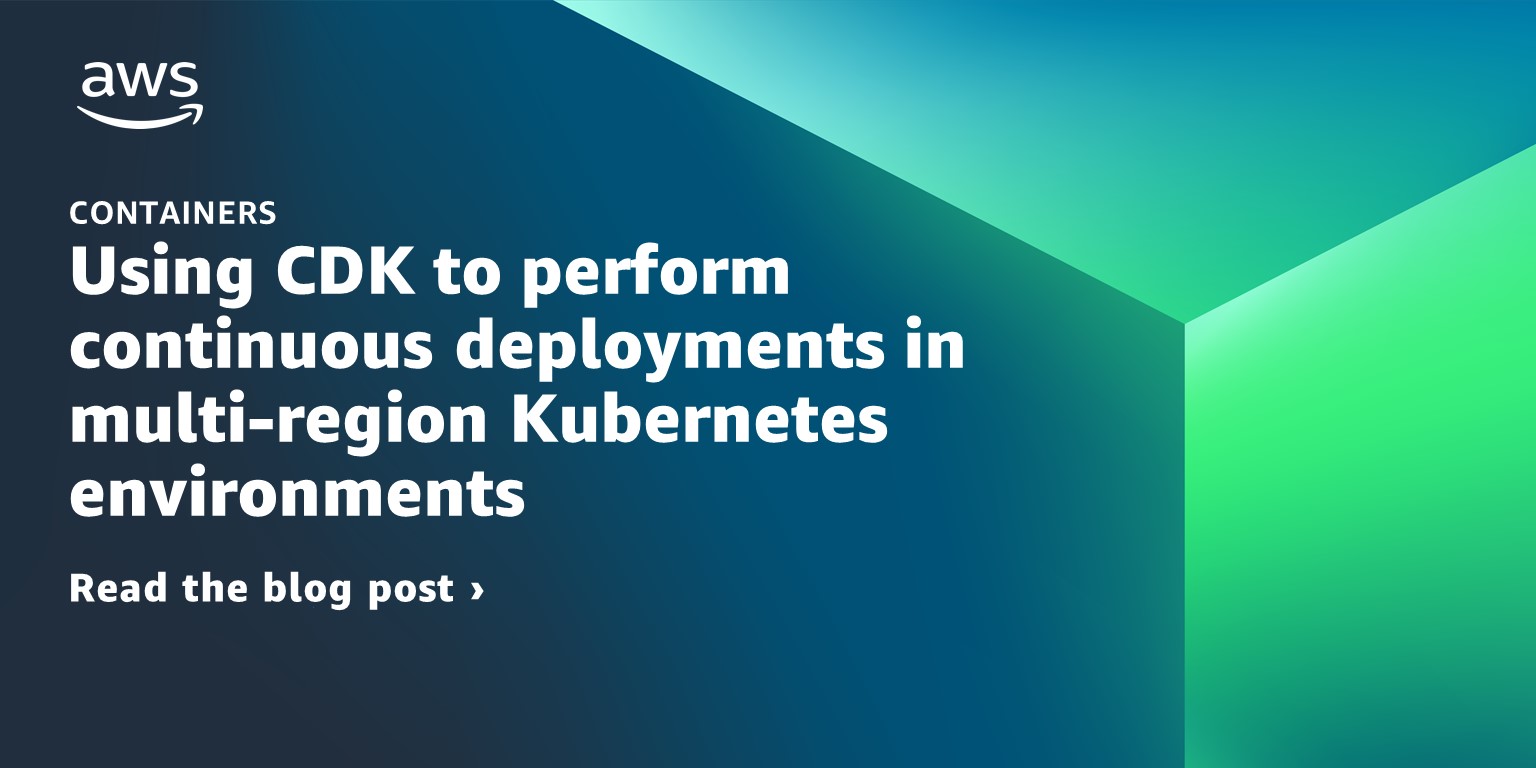Containers
Tag: Amazon EKS
Using CDK to perform continuous deployments in multi-region Kubernetes environments
This post also had contributions from Jiwon Yeom, Solutions Architect, AWS. Introduction AWS customers use infrastructure as code (IaC) to create cloud resources in a repeatable and predictable manner. IaC is especially helpful in managing environments with identical stacks, which is a common occurrence in active-active multi-region systems. Instead of managing each regional deployment individually, […]
Scaling Kubernetes with Karpenter: Advanced Scheduling with Pod Affinity and Volume Topology Awareness
This post was co-written by Lukonde Mwila, Principal Technical Evangelist at SUSE, an AWS Container Hero, and a HashiCorp Ambassador. Introduction Cloud-native technologies are becoming increasingly ubiquitous, and Kubernetes is at the forefront of this movement. Today, Kubernetes is seeing widespread adoption across organizations in a variety of different industries. When implemented properly, Kubernetes can […]
Kubernetes cluster upgrade: the blue-green deployment strategy
This article was co-written by Sébastien Allamand (Sr. Solution Architect Specialist, Containers) and Michael Marie Julie and Quentin Bernard from TheFork, one of the leading online restaurant booking and discovery platforms in Europe and Australia. In loving memory of our dear colleague Olivier Lebhard. Introduction Context Kubernetes has become a new standard in our industry, […]
Policy management in Amazon EKS using jsPolicy
Introduction jsPolicy is an open-source framework for managing validating or mutating admission control policies for Amazon Elastic Kubernetes Service (Amazon EKS) clusters using JavaScript (or TypeScript), which is similar to the way AWS Identity and Access Management (IAM) manages AWS accounts and resource access. It’s also possible to write the entire jsPolicy in a separate file and […]
Building STIG-compliant AMIs for Amazon EKS
As more organizations required to run hardened virtual machines to increase security to meet the internal compliance adopt Kubernetes, there is a need for hardened Amazon Machine Images (AMIs) that work with Amazon Elastic Kubernetes Service (Amazon EKS). There are multiple options to choose from. One solution is to use Bottlerocket, a special-purpose OS from […]
Migrating and modernizing Windows Communication Foundation (WCF) workloads onto AWS container services
Introduction Windows Communication Foundation (WCF) is a framework created by Microsoft in 2008 for building service-oriented architecture (SOA) applications. It provides a set of libraries for building web services, using different network protocols to send and receive data between service endpoints. With the introduction of .NET Core in 2016 and the emergence of microservices, our […]
Introducing bare metal deployments for Amazon EKS Anywhere
Introduction At one time, all servers were bare metal servers. We have come a long way with virtualization, cloud computing, and more recently with containers and serverless technologies. Despite these innovations, bare metal servers remain popular on premises. Customers run applications on bare metal infrastructure for performance benefits, to gain direct access to underlying hardware […]
Leverage AWS secrets stores from EKS Fargate with External Secrets Operator
Secrets management is a challenging but critical aspect of running secure and dynamic containerized applications at scale. To support this need to securely distribute secrets to running applications, Kubernetes provides native functionality to manage secrets in the form of Kubernetes Secrets. However, many customers choose to centralize the management of secrets outside of their Kubernetes […]
Run an active-active multi-region Kubernetes application with AppMesh and EKS
NOTICE: October 04, 2024 – This post no longer reflects the best guidance for configuring a service mesh with Amazon EKS and its examples no longer work as shown. Please refer to newer content on Amazon VPC Lattice. ——— As application architects we have come across many customers who are moving towards a container-only strategy […]
Amazon EKS improves control plane scaling and update speed by up to 4x
Years before Amazon Elastic Kubernetes Service (EKS) was released, our customers told us they wanted a service that would simplify Kubernetes management. Many of them were running self-managed clusters on Amazon Elastic Computer Cloud (EC2) and were having challenges upgrading, scaling, and maintaining the Kubernetes control plane. When EKS launched in 2018, it aimed to […]









